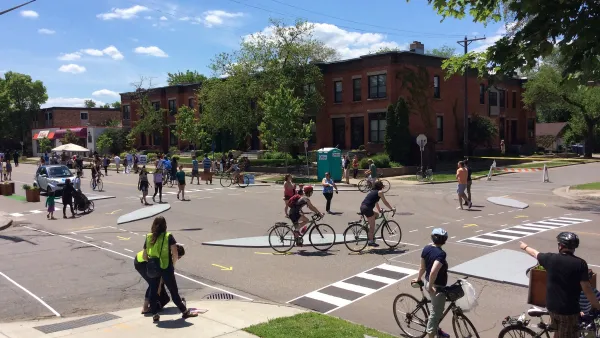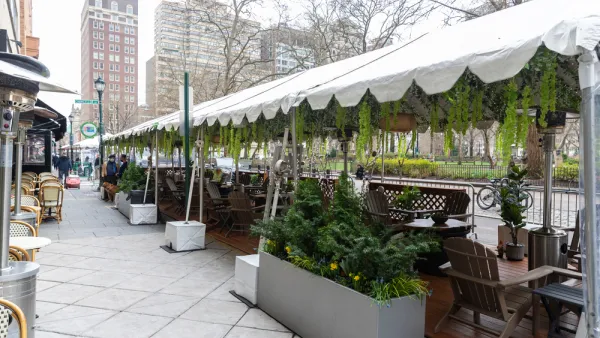Michael Kimmelman looks at the wave of 'cheap, quick, temporary and D.I.Y.-style approaches' that are introducing a more successful means of creating public space than traditional trickle-down techniques.
"Cities need public spaces like plazas," says Kimmelman. "For years they have mostly been planned from the top down. In New York, zoning laws have carved many of these spaces from commercial developments, which have been given bonuses to include them. Mayor Bloomberg is pushing a new proposal to rezone east Midtown, near Grand Central, that is a variation on this same old trickle-down theme."
"But fresh thinking has focused on cheap, quick, temporary and D.I.Y.-style approaches to creating public space — among these, curbside 'parklets' in San Francisco and a communal farm on what had been a derelict parcel in the middle of Phoenix," he explains. "And guess what? A beer garden made out of freight containers on an empty plot turns out to be a lot more popular and better for a city than a sad corporate atrium with a few cafe tables and a long list of don’ts on the wall."
"As more and more educated Americans, especially younger ones, are looking to move downtown, seeking alternatives to suburbs and cars, they’re reframing the demand for public space," Kimmelman continues. "They want elbow room and creative sites, cooked up by the community or, like [New York City's] plaza program, developed from a democratic mix of top-down and bottom-up governance."
FULL STORY: A Streetcorner Serenade for the Public Plaza

National Parks Layoffs Will Cause Communities to Lose Billions
Thousands of essential park workers were laid off this week, just before the busy spring break season.

Retro-silient?: America’s First “Eco-burb,” The Woodlands Turns 50
A master-planned community north of Houston offers lessons on green infrastructure and resilient design, but falls short of its founder’s lofty affordability and walkability goals.

Delivering for America Plan Will Downgrade Mail Service in at Least 49.5 Percent of Zip Codes
Republican and Democrat lawmakers criticize the plan for its disproportionate negative impact on rural communities.

Test News Post 1
This is a summary

Test News Headline 46
Test for the image on the front page.

Balancing Bombs and Butterflies: How the National Guard Protects a Rare Species
The National Guard at Fort Indiantown Gap uses GIS technology and land management strategies to balance military training with conservation efforts, ensuring the survival of the rare eastern regal fritillary butterfly.
Urban Design for Planners 1: Software Tools
This six-course series explores essential urban design concepts using open source software and equips planners with the tools they need to participate fully in the urban design process.
Planning for Universal Design
Learn the tools for implementing Universal Design in planning regulations.
EMC Planning Group, Inc.
Planetizen
Planetizen
Mpact (formerly Rail~Volution)
Great Falls Development Authority, Inc.
HUDs Office of Policy Development and Research
NYU Wagner Graduate School of Public Service




























